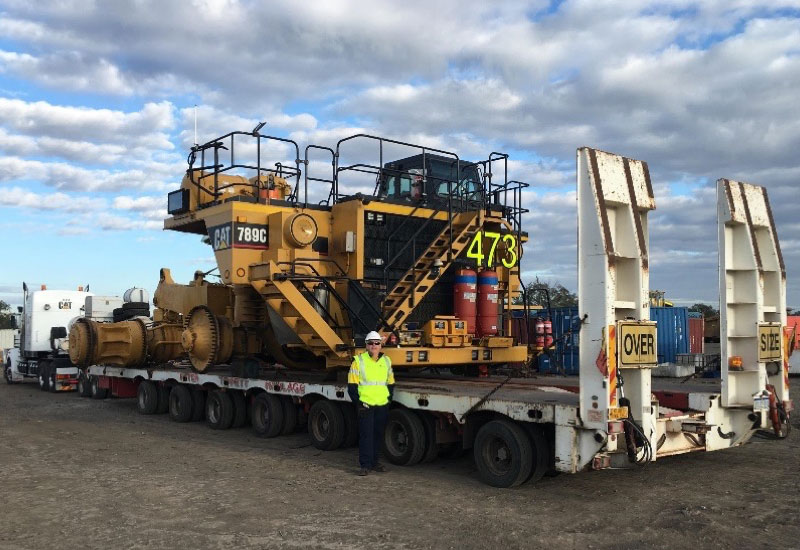Mine Energy Solutions (MES) is building on the recent dual fuel hybrid truck trial it ran with project partners New Hope Group and Hastings Deering at the New Acland coal mine in Queensland, Australia, and hopes to roll out its first commercial fleet at an operation in the state’s Bowen Basin late next year.
The trial on a Cat 789C haul truck took place over the past two years at New Acland and involved the conversion of high horse powered diesel engines from 100% diesel to dual fuel operation, using natural gas as the dominant fuel through sequential gas injection.
MES’ Graham Box provided IM with some more insight into the High Density Compressed Natural Gas (HDCNG®) technology, owned and developed by MES shareholder Intelligas, and the company’s business model.
Mr Box said MES, which doesn’t sell a product or a kit but a “fully-funded energy proposition”, uses bespoke designs for each truck model conversion it works on.
The incorporation of Type 4 carbon fibre cylinders to store the gas – which is compressed and stored at 350 bar (5,000 psi) using patented technology – is one of the ways the company has got around the weight and space constraints that previously limited technology using compressed natural gas and LNG on truck engines.
A lightweight non-invasive engine augmentation and on-board control system also help alleviate this issue, according to Mr Box.
“Remember, our gas remains in a gaseous state and is not liquefied,” he added.
The haul truck fuel conversion packs use HDCNG® proprietary gas cylinder filling technology to achieve energy densities approximately double that of conventional compressed natural gas storage systems and approaching two thirds of the density of LNG without the operational complexity and cost of LNG cryogenic storage and handling, according to MES.
“This enables mine trucks to achieve high levels of diesel displacement whilst carrying sufficient fuel on board for a full work shift and not adversely affecting payload,” the company said.
The system has been developed to achieve sufficient fuel storage quantities on board the machine for a full work shift of up to 12 hours. In mine haul trucks, a slim-line diesel fuel tank (and if required a slim-line hydraulic oil tank) replaces the existing tanks allowing for the introduction of HDCNG® fuel packs for the storage of gas on the machine.
The trial at New Acland took place on a Cat 3516B engine, yet Mr Box said the company is “well advanced” or has “completed development work” on a number of other OEMs and models.
“Our first commercial conversions will be on either a Liebherr or Komatsu mine haul truck,” he said. “We are targeting large trucks/engines, with the 789C, or equivalent, the smallest we will do.”
In addition to preparing for its first commercial fleet agreement late next year, Mr Box said deliveries are expected in the US and Western Australia’s Pilbara region in the following two years.
This is just for starters, with qualified opportunities in Canada, South America, India, Russia, South Africa, Ghana, Tanzania, Indonesia and Mexico, according to Mr Box.
“The best testament for us is feedback from mining companies who have been searching for the type of technology we have developed,” he said.
“We have been told by some of the world’s largest miners that there is clear daylight between our technology and anything else out there, including from the OEMs. It has been MES’ choice to position our commercial pathway in a targeted and controlled fashion and we are working closely and collaboratively with our pathfinder customers and these other mining companies.”











